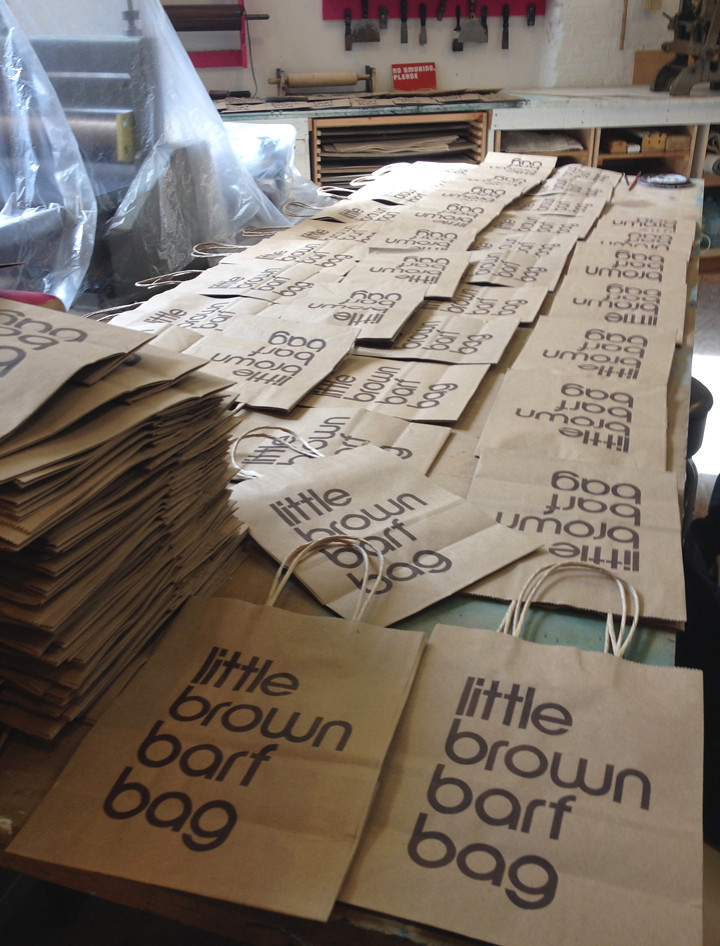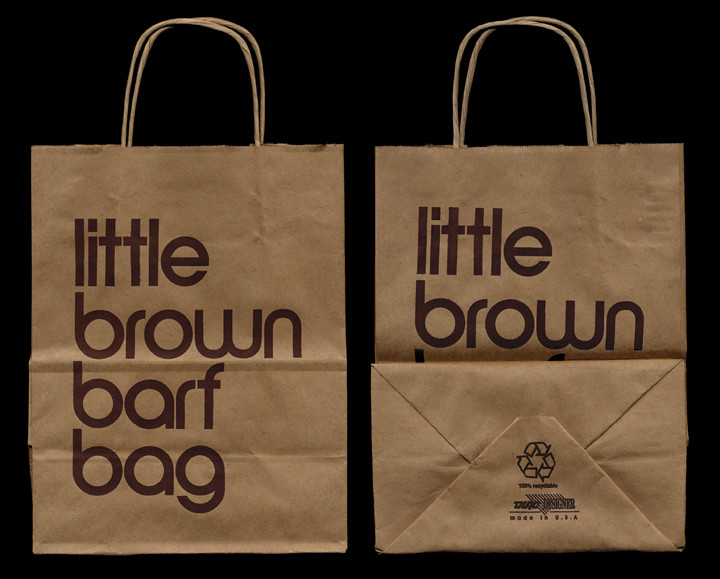“I collect barf bags” is not a complete sentence. The grammar is there, but it demands further explanation. To make sense of this singular hobby, a “because” or a charitable “and” is needed to steer listeners through the bewilderment of hearing that set of words, arranged in that way, for the very first time.
“I collect barf bags because they’re pretty neat.”
“I collect barf bags, and I’m not the only one.”
Of the eight billion people on the planet, the number of serious barf bag collectors is just north of 100, according to notable members of their ranks. Not statistically significant, but significantly more than one might guess.
A handful of these collectors are taking part in “The Last Barf Bag,” a new campaign by Dramamine — yes, the nausea relief medicine — to celebrate this most necessary of inventions with a 13-minute documentary and a barf bag exhibit in New York City. There, hundreds of specimens chart the evolution of the aviation industry.
For some collectors, it’s serious business. Right now, in barely hidden corners of the internet, barf bags are being purchased and traded in a commerce as foreign to most people as the phrase, “I collect barf bags.”

Of the eight billion people on the planet, the number of serious barf bag collectors is just north of 100, according to notable members of their ranks. Not statistically significant, but significantly more than one might guess./Flickr
The community, small as it is, has formed its own etiquette and occasionally fizzes with a bit of drama. Friendships have been forged over this hobby, and the lore — oh, it is startlingly rich in detail.
But it’s barf bags, after all. And if you’re going to be part of this scene, you have to have a really good sense of humor.
The ineffable why
When Steve Silberburg started collecting barf bags around 1981, he thought he would be the only one. He was wrong, but it was an understandable assumption.
“When you’re young, you go, ‘Oh I’m going to collect something.’ But stamps and coins, everybody collects those,” the computer programmer and Maine native told CNN.
After dabbling with collections of sardine keys and styrofoam weights, Silberburg spotted inspiration in a seatback pocket on a cross-country flight from Boston to San Francisco.
Steve Silberburg shows off his unique vanity plate, which is undoubtedly a point of interest around town. Dramamine
“Nobody collects these,” he remembers thinking. “This is what I’m going to do.”
Silberburg was in college at the time and thought it would be amusing to hang the barf bag outside the door of his room in his fraternity house. People were indeed amused, but it had an unintended side effect: Classmates started bringing Silberburg other barf bags to add to his collection.
When the internet became widely available in the mid-’90s, Silberburg said it was like a whole new world opened up. He connected with other collectors, and the pastime took off in earnest.
Eli Cox, a collector from Austin, Texas, can also blame academia for abetting his hobby. The business professor told CNN he got a portion of his 370-bag collection from students he knew during his teaching days.
“It’s been a surprise to me, over the years, to get bags that were mailed from students who had graduated 10 or 20 years earlier, but somehow remembered what I was doing,” he said. “It has been a way of connecting people and generating some laughter. So that’s really been fun.”
Fun, Cox says, is the whole point.
“It’s a dopamine producer. When I tell people about it, they first ask if they understood me properly, and then they laugh. And I think there’s a dopamine shortage and a laughter shortage in the world right now.”
Around the world in barf bags
The barf bag is such a specific artifact of human advancement. Consider all that had to be accomplished in order for it to exist: the triumph of aviation, the incomprehensible global infrastructure of commercial flight, and finally, the neat trick of inventing something people can throw up in that isn’t too threatening to keep close by.
Bob Grove, a former general counsel from San Diego, came to barf bag collecting through his larger passion for travel. Hundreds of framed bags line the walls of his home, to the dismay of his (very understanding) interior designer wife.
Like many collectors, a lot of his favorite acquisitions carry a story. There was the time he and fellow collector Bruce Kelly took a shuttle across the border to a Tijuana airport to see if they could get bags from the domestic Mexican airlines. Thanks to some very accommodating airport staff, they ended up with a haul.
“Sometimes, people don’t want to help you, but at that airport people couldn’t have been nicer or more accommodating. It was unbelievable,” he said.
Grove says some of his most sought-after bags are from small airlines, defunct airlines and regions of the world that don’t see as much international travel. The particularities of the airline industry play a factor, too.
Grove recalls when the government-owned Chinese airline CAAC was broken up into dozens of different domestic airlines, resulting in a new crop of unique barf bags. Those are some of his favorites because of the quality and attention to detail: beautifully illustrated cherry trees, sturdy construction and, in one case, a design scheme best viewed from the perspective of, well, someone actively using it.
“When you collect, you can see the history of the graphic design as well,” he said. “You can see designs change over the years, and the graphics that are on the domestic Chinese airlines are among the best in the world.”
A portion of Bob Grove's tastefully framed collection adorns the walls of a bathroom in his home. Dramamine
Bruce Kelly, Grove’s friend who convinced him to take the jaunt to Tijuana, shares his love of travel. The inciting incident in his barf bag history was a backpacking trip to Burma (now Myanmar) in 1976, when he kept a bag on a whim because of its cool Burmese script. Years later he dug it out and started to wonder what else it could awaken.
“I’ve spent many a time on international flights staring at the seat back in front of me, and eventually I thought, wouldn’t it be interesting to collect barf bags?” Kelly said, the fateful assumption barrelling down like a high-speed train: “I’m sure no one else has ever thought of it. I’ll have the only collection in the world.”
He may not have the only collection, but at roughly 8,000 bags, it’s definitely one of the biggest. Kelly also runs Kelly’s World of Airsickness Bags, an online catalog of his collection, with some specimens for sale.
“I try to list all the history of each airline that I collected from,” he said. “So, you know, it became a history thing, and somebody’s got to preserve that history before it’s lost forever.”

Barf bags are all around you, if you have the desire to look. Some collectors have expanded their acquisitions outside the world of air sickness bags to, well, any kind of sickness bag at all./Flickr
An invention of necessity
Bruce Kelly's collection reflects a well-traveled life. Dramamine
The invention of the barf bag is widely credited to American inventor Gilmore Schjeldahl. The native North Dakotan was an industrial design giant who specialized in bags and plastic linings and, in 1949, created a harmonious union of the two: a discreet, plastic-lined bag for motion sickness.
The term barf bag sounds so undignified, but the alternatives aren’t much of an improvement. “Comfort bag” is cloaked in euphemism. “Sickness bag” lacks charm. The scientifically sanitized “emesis bag,” perhaps too formal for the occasion. (Try to eke out “Excuse me, I fear I require an emesis bag,” and the moment may be upon you — or your lap — before you finish.)
Barf bag it is, then. Evocative and memorable; a bit like a good barf bag itself.
When asked about their favorite barf bags, the collectors CNN spoke to all had slightly different answers. One thing they agreed upon, however, was the barfing reindeer.
“One of the favorites of probably every collector has to be a bag from a domestic Finnish airline called Finn Aviation, which has since been absorbed into the national carrier FinAir,” Bob Grove explained. “Their logo was a reindeer, and their barf bag was the logo, but the reindeer was barfing ice cubes. It’s very Scandinavian minimalist. Simple, but you know exactly what the meaning is, right?”
The barfing reindeer is a good reminder that these receptacles have a very practical application outside of being kept in vinyl sleeves or displayed in New York City galleries
The famed 'Barfing Reindeer' bag, admired by collectors for its unmistakable symbolism. Dramamine
Steve Silberburg recalls having to make use of a barf bag while fighting sinus problems on a flight from Omaha to St. Louis. (His exact words were “I threw up on a TWA flight once.”) It was a double whammy: TWA no longer exists, so there’s a piece of history. And all things considered, your most memorable barf bag is probably the one you have to use.
“I must say that the bag worked quickly, and I was amazed at how neat the whole experience was,” he said.
Sadly, people don’t barf on planes like they used to. The collectors lament that barf bags are now a dying art, absent from many large carriers and often lacking the je ne sais quoi of the nauseated past, when air travel was new and bags were fixtures in the seatback pockets.
“The airlines have gotten much smoother, so you don’t get sick on flights anymore,” Bruce Kelly said. “Who knows, maybe Dramamine has helped.”
On a different plane
Barf bags are all around you, if you have the desire to look. Some collectors have expanded their acquisitions outside the world of air sickness bags to, well, any kind of sickness bag at all.
Kelly, who maintains the extensive online barf bag catalog, also collects bags from boats, trains, buses — wherever people may puke.
For Silberburg, some of his coolest bags aren’t from any type of transportation at all. (Although one from a space shuttle certainly ranks high in his collection.)
Barf bags come in many styles and, well, capacities. Eli Cox holds a plastic medical-style emesis bag. Dramamine
“I have bags from elections, political events. I have bags celebrating royal weddings and the Diamond Jubilee in England. I even have some from banks. I don’t remember offhand how I got those, but their marketing departments must have had a great week.”
Silberburg, a confessed “computer weenie,” is also partial to the ones passed out at video game conventions, and even has one themed to the famed computer game Roller Coaster Tycoon.
“Some collectors are purists,” he says. “But I collect them all.”
Listening to the collectors describe their barf bag collecting experiences, one gets a sense of the larger community. There are collectors in Japan and Europe, some of whom attract envy from American collectors who don’t get to travel as often or have as many air carrier options in their region.
Then, there are unofficial agreements among traders that can get a little strained. One collector described the “one for one” rule of thumb, which some collectors try to abuse to get rare bags in exchange for several more common ones.
Such is life in a community, even one as niche as barf bag collecting.
“We all know each other, all over the world. We keep in touch with each other,” says Kelly. “We don’t want anybody to get ahead of us, you know.”
“It makes a good litmus test, telling people you collect barf bags,” Silberburg says. “If people think it’s cool, those are people I’d typically get along with. But if they say, ‘Oh, gross,’ I probably don’t need to know them.”






.png)
